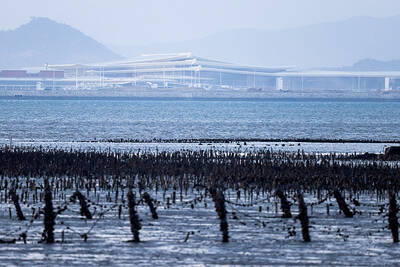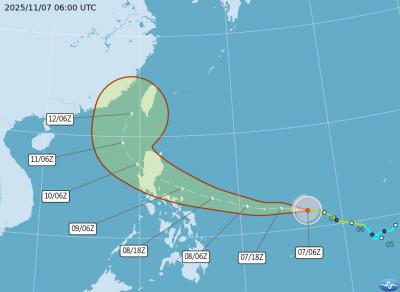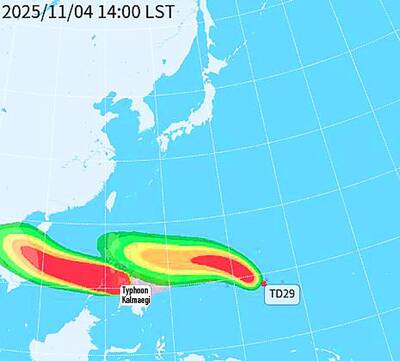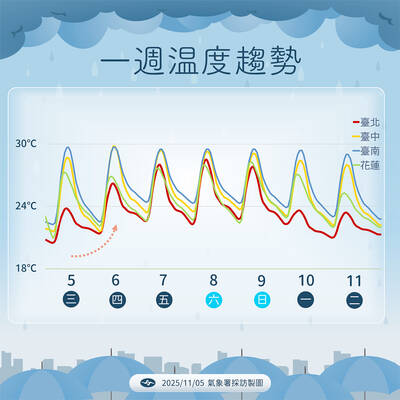The Diaoyutai Islands (釣魚台) “are the territory of China and date back to 1403 during the reign of the Ming Dynasty’s Emperor Yongle,” the Ministry of Foreign Affairs said in a rejection of a sovereignty claim outlined by Japanese Prime Minister Yoshihiko Noda.
At a press conference on Thursday evening called to address issues of disputed territory, Noda said “there is no doubt ” that the islands, known as the Senkaku Islands in Japan, “are an integral part of Japan” and he denied that sovereignty over the island chain is being disputed.
Noda was quoted by the Central News Agency (CNA) as saying that the difference between the issue of the Diaoyutais and that of the contested Takeshima Islands, named by South Korea as Dokdo, was that its sovereignty claim over the Senkakus is “undisputed.”
Noda said China had not asserted sovereignty over the Senkaku until the 1970s when it learned that the islands are possibly situated nearby large reserves of oil, the CNA report said.
The Meiji government incorporated the Senkaku Islands into Okinawa Prefecture in 1895 after it had confirmed that the islands were not under the control of the Qing Dynasty, Noda said.
Noda’s statement provided a rebuttal to repeated calls made by President Ma Ying-jeou’s (馬英九) administration that Japan must first recognize Taiwan’s sovereignty over the islands before they can move toward resolving their disagreement over the territory through peaceful means as spelt out in his East China Sea peace initiative.
In response to Noda, the ministry said his statement was “unacceptable” and reiterated that “our government sticks firmly to its sovereignty contention over the Diaoyutais.”
It is indisputable that the Diaoyutais are an inherent part of territory of the Republic of China and affiliated islands of Taiwan from the perspective of history, geography, geology, international law and traces of ancient settlements, the ministry said.
“In terms of history, the name Diaoyutai first appeared in the Chinese book Voyage with the Tail Wind in 1403, the first year of the Ming Dynasty’s Emperor Yongle, which showed that the islands were discovered, named and used by the Chinese,” the ministry said.
The ministry said there were other descriptions of the island chain in Ming Dynasty and Qing Dynasty historical documents showing that “the islands were first discovered, named, used, and incorporated into the territory by ancestors of our country.”
Back in the 18th and 19th centuries, the Diaoyutais were also designated as Chinese territory in maps published by China and other countries, it said.
The ministry countered Noda’s contention as to when and how the islands were incorporated into Japan’s territory.
Official Meiji documents showed that Japan’s territorial ambitions around the Diaoyutai Islands began in 1885 after it knew that the islands had been found and claimed by China, the ministry said.
The ministry said Japan continued to postpone the issue at the time because then-Shanghai-based newspaper, the Shanghai Mercury, reported that Japan was planning to seize the Chinese islands.

UNILATERAL MOVES: Officials have raised concerns that Beijing could try to exert economic control over Kinmen in a key development plan next year The Civil Aviation Administration (CAA) yesterday said that China has so far failed to provide any information about a new airport expected to open next year that is less than 10km from a Taiwanese airport, raising flight safety concerns. Xiamen Xiangan International Airport is only about 3km at its closest point from the islands in Kinmen County — the scene of on-off fighting during the Cold War — and construction work can be seen and heard clearly from the Taiwan side. In a written statement sent to Reuters, the CAA said that airports close to each other need detailed advanced

Tropical Storm Fung-Wong would likely strengthen into a typhoon later today as it continues moving westward across the Pacific before heading in Taiwan’s direction next week, the Central Weather Administration (CWA) said. As of 8am, Fung-Wong was about 2,190km east-southeast of Cape Oluanpi (鵝鑾鼻), Taiwan’s southernmost point, moving westward at 25kph and possibly accelerating to 31kph, CWA data showed. The tropical storm is currently over waters east of the Philippines and still far from Taiwan, CWA forecaster Tseng Chao-cheng (曾昭誠) said, adding that it could likely strengthen into a typhoon later in the day. It is forecast to reach the South China Sea

WEATHER Typhoon forming: CWA A tropical depression is expected to form into a typhoon as early as today, the Central Weather Administration (CWA) said yesterday, adding that the storm’s path remains uncertain. Before the weekend, it would move toward the Philippines, the agency said. Some time around Monday next week, it might reach a turning point, either veering north toward waters east of Taiwan or continuing westward across the Philippines, the CWA said. Meanwhile, the eye of Typhoon Kalmaegi was 1,310km south-southeast of Oluanpi (鵝鑾鼻), Taiwan’s southernmost point, as of 2am yesterday, it said. The storm is forecast to move through central

UNKNOWN TRAJECTORY: The storm could move in four possible directions, with the fourth option considered the most threatening to Taiwan, meteorologist Lin De-en said A soon-to-be-formed tropical storm east of the Philippines could begin affecting Taiwan on Wednesday next week, the Central Weather Administration (CWA) said yesterday. The storm, to be named Fung-wong (鳳凰), is forecast to approach Taiwan on Tuesday next week and could begin affecting the weather in Taiwan on Wednesday, CWA forecaster Huang En-hung (黃恩鴻) said, adding that its impact might be amplified by the combined effect with the northeast monsoon. As of 2pm yesterday, the system’s center was 2,800km southeast of Oluanbi (鵝鑾鼻). It was moving northwest at 18kph. Meteorologist Lin De-en (林得恩) on Facebook yesterday wrote that the would-be storm is surrounded by